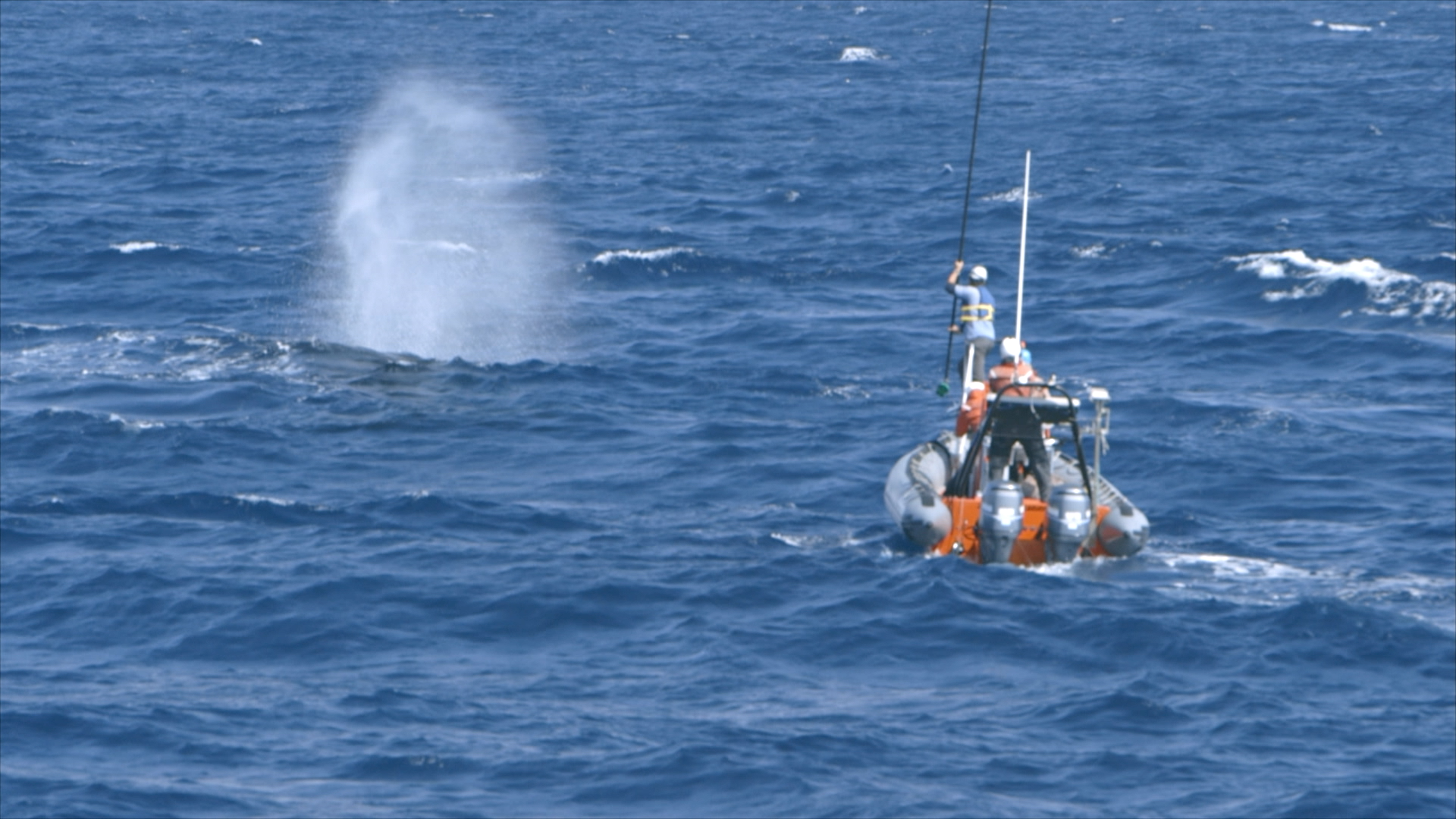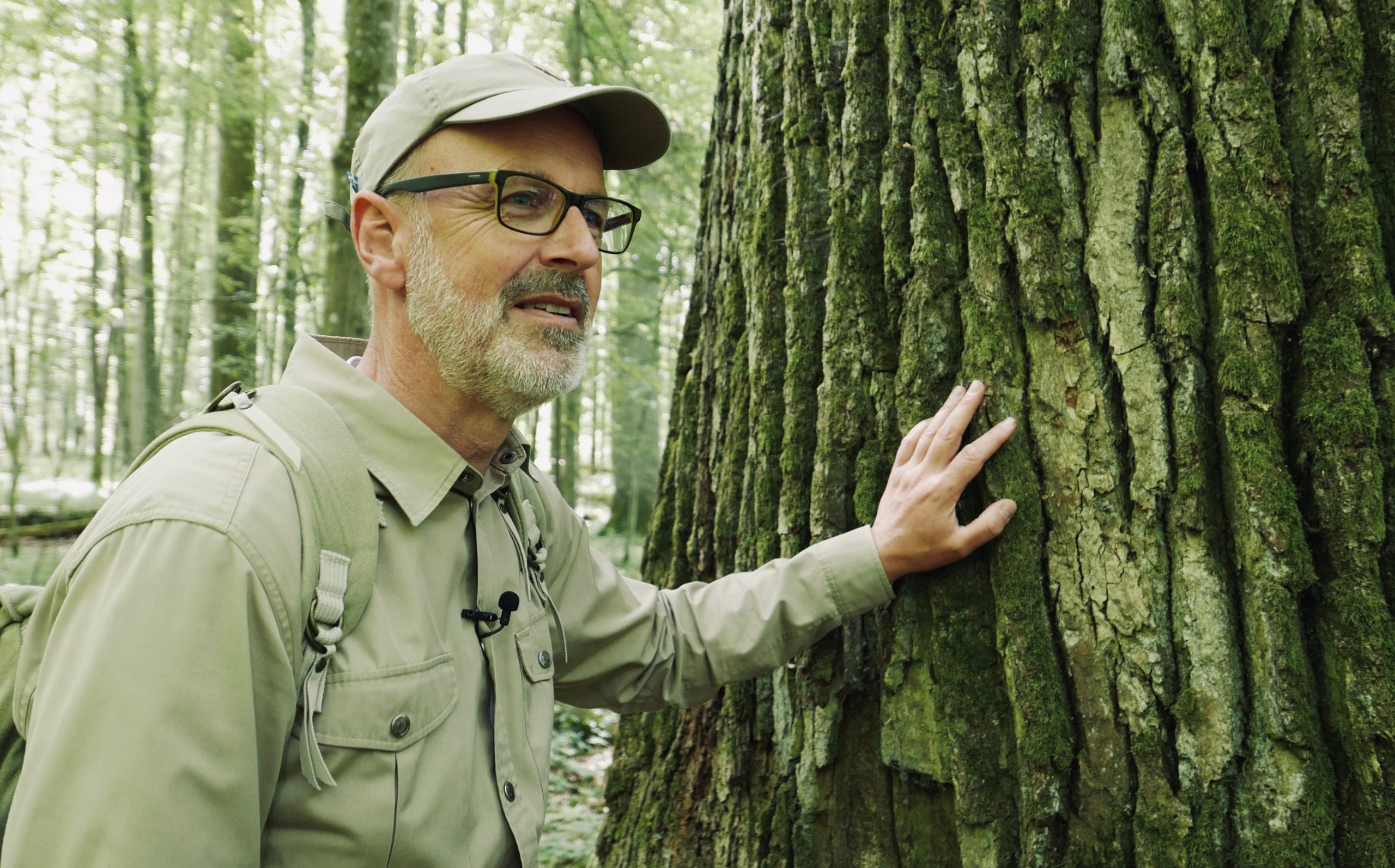Who expected a whale to be the most relatable film character of 2021? The Loneliest Whale delivers a touching quest to explore the truth about a mysterious whale that swims through the ocean emitting melancholic sounds at an irregular 52-hertz frequency. As the only whale believed to produce such a song, scientists assume it a lone breed. Couple its irregularity with the fact that it’s been seen about as frequently as the Loch Ness Monster, and “52” naturally gripped the world with its mythic stature as a creature destined to float through life alone.
Director Joshua Zeman aims to go where no scientist has gone before with The Loneliest Whale. The doc sees the filmmaker join forces with several scientists on a hunt to find the whale, or 52 as they call it, by predicting its travel patterns and detecting it through bioacoustics. This environmental expedition might seem like a departure for a filmmaker whose directing credits focus almost exclusively on true crime with the doc series The Sons of Sam: A Descent into Darkness, Murder Mountain, and The Killing Season, and the feature documentary Cropsey preceding Zeman’s whale tale. However, Zeman, speaking with POV ahead of The Loneliest Whale’s release, says that while 52’s story is a palette cleanser from all the murder, the project isn’t far from his work in true crime.
“This is a mystery,” observes Zeman. “You could say it is a bigger mystery than all of those true crime stories. This film is about one of the biggest mysteries in the world: our oceans.”
A Quest for Closure
The engaging quest of The Loneliest Whale bears obvious influence from Zeman’s true crime root. The hunt makes for an engaging environmental fable as the doc explores the strange history of 52 and its elusive nature. “It started by scientists hearing it on a classified system: the hydrophones in the ocean that were used during the Cold War,” explains Zeman. “They didn’t know what it was: whale or a submarine.”
The doc explains how scientists unravelled the mystery once the recordings were declassified. The unearthed history of 52, plus the mystery of whether it was still alive, built the whale’s mythology in popular culture. Zeman says that one attraction to this story was the strong emotional reaction that people had when he told them about the so-called loneliest whale. “What is it about this story that grabs people in such in such a way?” he asks. “It’s a reflection of who we are. It’s our existential crisis—nobody wants to die alone.” His search for answers inspired more questions and heightened the mystery. The director explains that his inquiry uncovered how little the scientists actually knew about the whales since costly field expeditions leave few opportunities to study 52 beyond the recordings.
The Loneliest Whale sees Zeman’s crew join forces with several marine biologists and bioacoustics researchers on a hybrid expedition. Zeman says that the DIY hunt for 52 was the thrill of the project as the quest narrative is a tenant of all good storytelling. “We don’t go on quests anymore,” Zeman explains. “We have this idea that all the answers are at our fingertips. You could ask me any question, I can put it in Google and we can have a fairly good answer, so we should tackle something that we don’t have an answer to.” Zeman says the journey into the unknown offered a dynamic different from his true crime docs since the ending itself was uncertain, whereas investigations into cold cases and urban legends generally lead audiences towards a question.
As the expedition begins, Zeman, his crew, and the scientists know that their odds are literally a drop in the ocean. “But that’s where the drama comes: in the risk of failure,” says Zeman. Overcoming the fear of failure complements the confrontation between loneliness and the desire for connection that are at the heart of the film. “In some sense, this is the biggest lesson that I’ve tackled so far,” observes Zeman.
The Science of Storytelling
The Loneliest Whale provides a creative contrast to the recent whale expedition doc Fathom, which also followed researchers into the field as they studied whales through bioacoustics. However, where Fathom observes the scientists through a detached and impersonal lens, Zeman goes along for the ride with the researchers in front of the camera. His presence invites the scientists to distill complex information for general audiences, but it also draws out the relatable elements of 52’s solitary swim.
Zeman says that the choice to insert himself into The Loneliest Whale was partly “born out of necessity” and partly “to bring the humanity of science.” However, both reasons share a goal: to elucidate the story. “Scientists need to be better storytellers,” explains Zeman. “Especially as we face battles about science and our environment, like climate change, we need to be better storytellers.” The urban legend of “the loneliest whale” is merely one example in which good storytelling connects broad audiences to environmental concerns.
Moreover, the film sees science and storytelling align as brainwaves converge between the parties on the voyage. For example, the rag tag nature of the indie shoot serves both parties when the film crew and the researchers affix Go-Pro cameras to whales with hopes of getting a shot of 52 underwater. The Loneliest Whale delivers high sea adventures as the crews pursue the whales on smaller boats, strategically manoeuver around the giant mammals, and slap the cameras on them with a pole.
“At some point, their process and our process meshed,” says Zeman. “That became so satisfying from a filmmaking standpoint because we were all in this quest together, and it was really interesting for them to see how they could use our tools.” One sequence sees the scientists in awe as drones allow the crew to film whales from above, capturing the first known images of a whale swimming while singing. Each discovery affords a sense that they’re getting closer to 52 as the seven-day expedition approaches its end.
“When the legend becomes fact, print the legend”
The Loneliest Whale sees another negotiation between art and science as Zeman and company consider the extent to which they can anthropomorphize 52. One crewmember notes the tragedy that the lonely whale doesn’t have a proper name, while others inevitably lapse into descriptors that afford the whale human emotions. Zeman says that anthropomorphizing was a sensitive subject, but simply part of the dance between science and storytelling. “They need these anthropomorphizing metaphors, so that we can understand science better and, if you will, demystify the legend of the lonely whale that isn’t really lonely,” notes Zeman. “I think that doing so allowed us to discuss what loneliness means, then it became a much richer relationship that human beings have with the ocean and animals.”
As the journey of The Loneliest Whale yields new information about 52, the underlying question of the story is whether the urban legend will endure. The film calls to mind the mantra from John Ford’s classic western The Man Who Shot Liberty Valance, which ends with the oft-quoted advice, “When the legend becomes fact, print the legend.” Zeman says this mantra is at the heart of his filmmaking as he explores urban legends and mysteries whether they involve boogeymen or blue whales.
“All we’re doing is adding another chapter to the story of the loneliest whale,” explains Zeman. “That’s what filmmakers and storytellers learn: no matter how much you may blow apart a myth, you never really take it away. All you end up doing is adding another chapter and another layer to that mythology, which, in some ways, makes it that much richer and helps it grow.”
The Loneliest Whale opens in theatres July 16.












